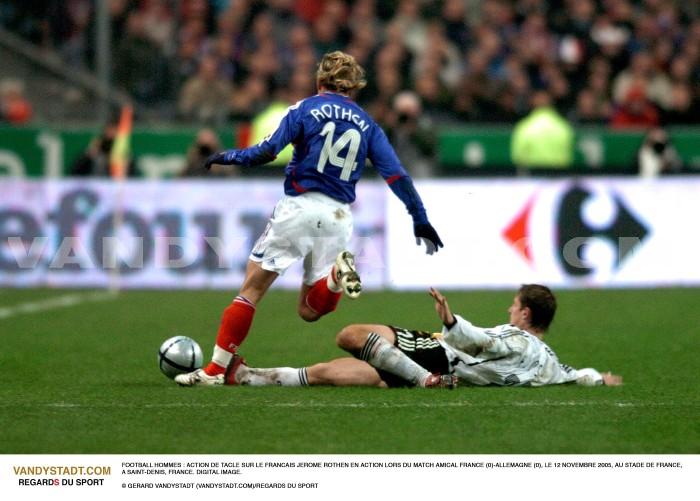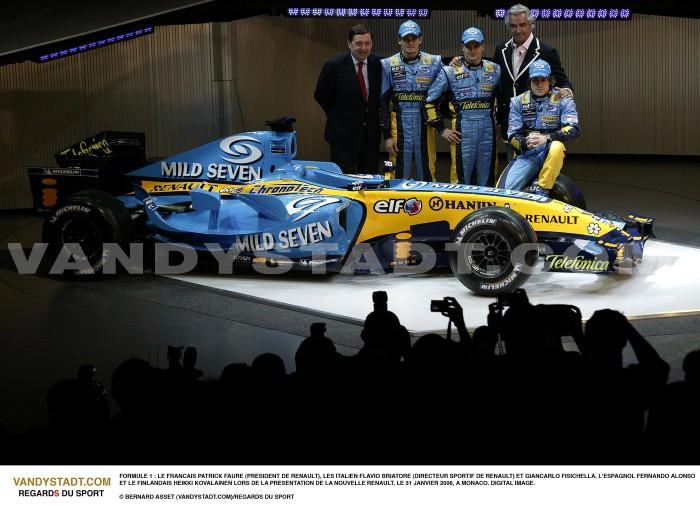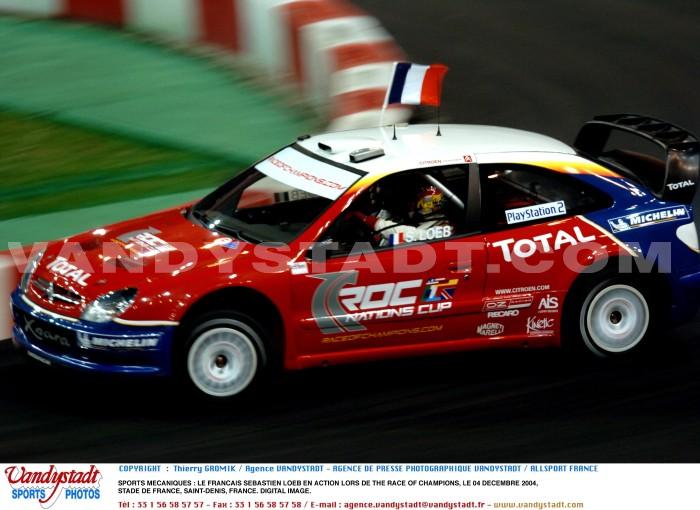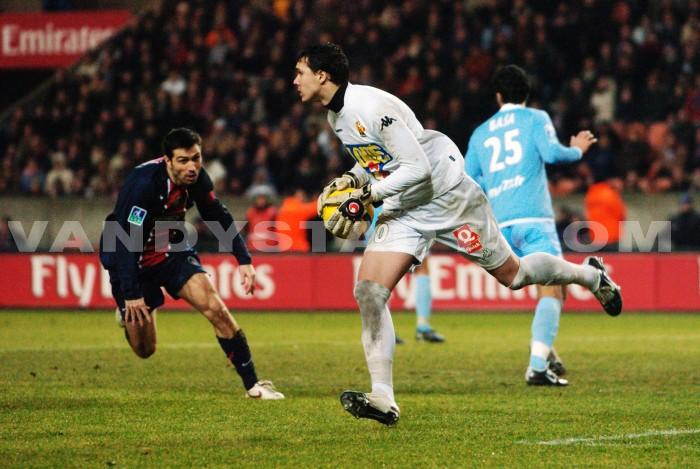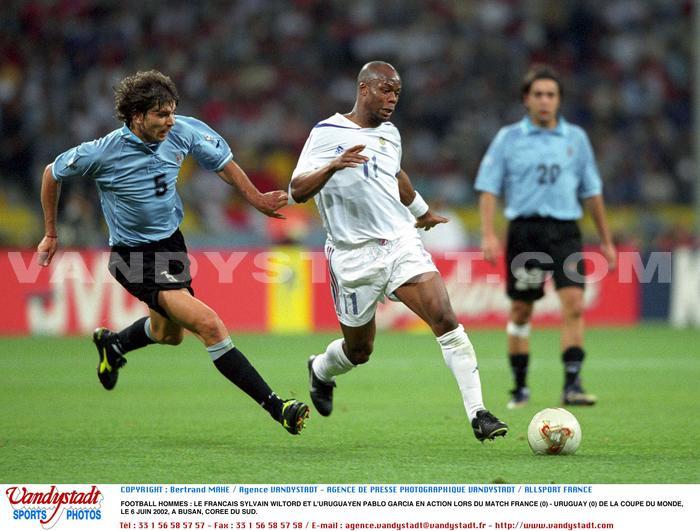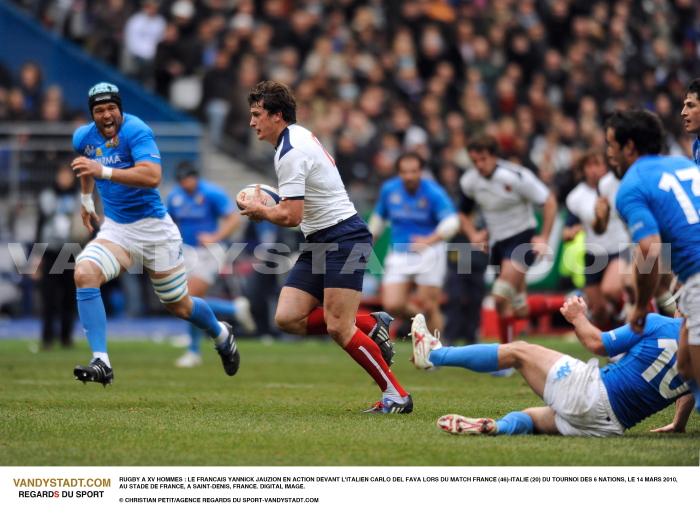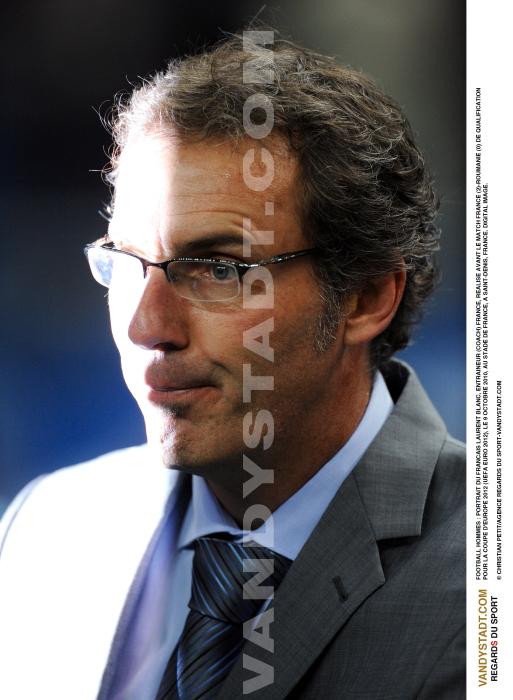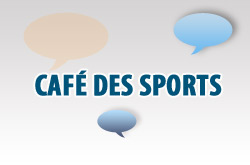Football - Football history
FOOTBALL - Olympic Sports
![]()
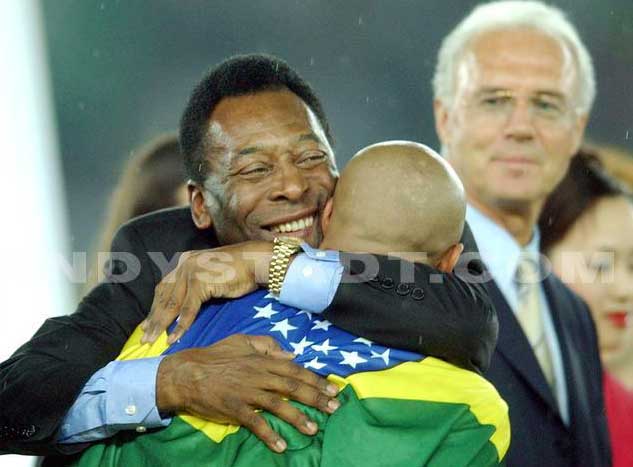
Olympic sport "Foot - foot ball - balloon
History
"The ball is round, square field like the image of heaven and earth. The ball flies over us like the sun while two teams face. Poem by Li Yu (50 BC).
Men have always clap in a 'ball' with their feet. The Chinese, Japanese, Egyptians and Assyrians played a ball game long before our era. The ball game played in Florence in the Renaissance, the 'Calcio Fiorentino' is regarded as the true ancestor of football.
In 16th century England, the 'public schools' playing a ball game, the 'hurling at goal' that resembled the French choule. A sport does not exist as it does not conform to specific rules. The modern game was born probably in English schools at the same time as rugby where the first rules of "foot ball" appeared around 1846 to the University of Cambridge. During a meeting at Trinity College, the first code, the 'Cambridge Rules' (the 14 rules of Cambridge) was prepared. These rules should be fair, rational and practical. Among others: they fixed the lot size, playing time and number of players. The teams consist of 15 to 60 players. The "Cambridge Rules" were the basis of 'Sheffield Club Rules' written in 1856, which were then adapted to become the first in 1863 "Laws of the Game" during the creation of the Football Association.
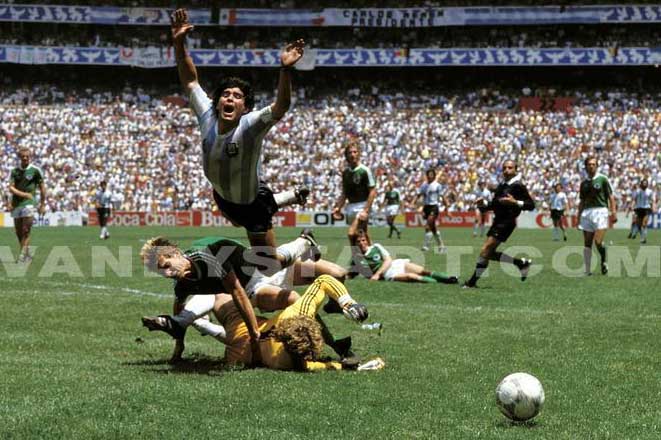
In 1870,''Football Association sets the number of players from each team to eleven.
The first international football history dates back to 1871 and opposed the Scots to the English (score: 0-0). Two thousand spectators attended the first final of the FA Cup (The Cup), 17 000 in 1888, 45 000 in 1893 and 110 000 in 1901.
The oldest football club in the world is Sheffield FC, which celebrated its 150 years October 24, 2007.
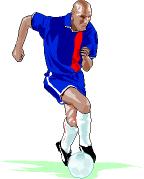
? The oldest club in the world is the English club "Sheffield Football Club founded in 1855
? The oldest club in France is "Le Havre Athletic Club, founded in 1872.
Key Dates
1580: Giovanni Bardi published a set of rules of game "Calcio".
1848: The first rules "Cambridge Rules" were enacted.
1871: The goalkeepers are mentioned for the first time. He has the right to use your hands.
1873: The corner was born.
1886: The first formal session, June 2, the International Football Association Board.
1890: The neutral arbitrators make their appearance.
1891: Introduction of penalty or kick Repair invented by Irishman William McCrum: willful misconduct within 11 m of goals.
1902: The line of penalty area increased from 11 to 16.45 m.
1907: The offside a player in his own camp disappears.
1912: The goalkeeper can not grasp the ball with his hands in his own penalty area.
1913: FIFA becomes a member of the International FA Board.
1925: The rule of offside is amended. It takes 2 players instead of 3 between the attacker and the opposing goal for it to be offside.
1927: A corner can be drawn directly into the goal.
1929: During a penalty kick, the goalkeeper must remain on his goal line.
1937: The weight of the ball passes from 396 to 453 grams.
1948: Prime replacements in friendly match
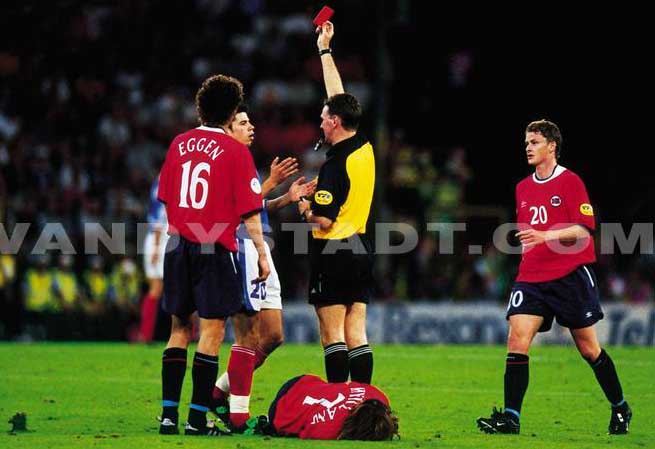
1976: The yellow cards (already used in World Cup 1970) and red are officially introduced.
1992: now the goalkeeper has no right to take the ball in hand if one partner deliberately makes a pass at the foot.
1997: New adaptation and drafting new laws.
1998: The tackle from behind is forbidden.
1999: Consolidation of European Cups.
Some milestones Board
1848: Representatives of several football teams of public schools in Cambridge adopt a set of binding rules for all, which is the foundation of future 'Laws of the Game'.
1863: The Football Association "was born October 26 in the Freemason's Tavern in London and sets 14 rules that are enacted and declared official.
1886: First session of the International FA Board. At times like now, the authority of the Board is purely ethical.
1913: FIFA, founded in 1904, joined the Board.
1938: Revision of the Laws of the Game A new version of the 17 laws presented by Stanley Rous (28 years as head of the English Federation, and FIFA President from 1961 to 1974).
1957: Foundation of the Confederation of African Football (CAF) between the four nations Egypt, Ethiopia, Sudan and South Africa)
1958: Setting new voting rights that are still in force.
1st May 1904: First international match between France and Belgium (3-3) in Brussels before 1500 spectators. It was also the first international match in Belgium.
The French Federation
The French Football Federation, was founded April 7, 1919 by transforming the "French Committee Interfederal" created in 1906 and acknowledged by State decree dated December 4, 1922. It includes groups known as sports clubs whose primary purpose or ancillary to play football.
Football in France in 2008 is: 2,146,752 licensees, including 45,853 women - 19,073 amateur clubs - 40 clubs participating in professional leagues in Ligue 1 (20 clubs) and Ligue 2 (20 clubs) - 1,000,000 matches per year.
The dates of French football
January 15, 1917: Creation of the Coupe de France (Coupe Charles Simon).
1932-1933: first professional championship won by Olympique Lille.
1938: France holds third WorldCup.
1960: France welcomes the first European Championship of Nations competition created at the initiative of Henri Delaunay.
June 27, 1984: France won the European Championship of Nations (Euro 84 - Paris) and the Gold Medal at the Summer Olympics (Los Angeles).
August 21, 1985: France, European champion in title, won at the Parc des Princes the Intercontinental Cup against Uruguay, winning the Copa America 1983.
1992: FIFA says France to the organization of the Sixteenth World Cup (1998).
July 12, 1998: For the first time in its history, France won the WorldCup.
The winners of the France team
World Champion in 1998 (semifinalist in 1958, 1982 and 1986)
European Champion in 1984 and 2000.
Olympic Champion in 1984
Winner of the Confederations Cup in 2001 and 2003.
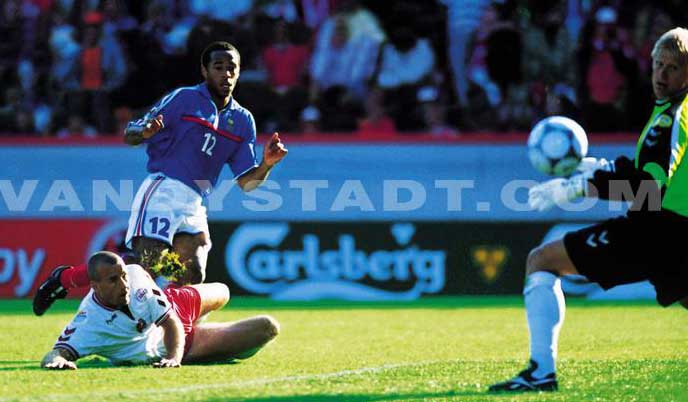
The International Federation (FIFA: Federation Internationale de Football Association) was founded in 1904 on the initiative of seven associations (France, Belgium, Spain, Netherlands, Denmark, Switzerland and Sweden) headed a French journalist, Robert Guerin (his first president). Since then, football has become a universal sport played in the streets, villages and stages and has won all five continents with over 250 million players (including 30 million women) worldwide. This is by far the most popular sport, the most practiced and most watched in the world. In June 1998, the Swiss Sepp Blatter succeeded Brazilian Joao Havelange and became the 8th president of FIFA.
National associations affiliated to FIFA are grouped geographically in the same continent: Confederation of African Football (CAF was established in 1956), 52 nations affiliated Asian Football Confederation (AFC founded in 1954), 45 nations; Union of European Football Associations (UEFA founded in 1955), 51 nations, which organizes regular meetings between clubs and national teams: the European Championship of Nations, the League of Champions, etc. ..; Confederación Norte, Centroamericana y Caribe de Futbol the (CONCACAF created in 1961), 35 nations Confederación Sudamericana de Futbol (CONMEBOL created in 1916), 10 nations Oceania Football Confederation (OFC), 11 nations.
Currently, 208 national associations affiliated to FIFA, only countries that the United Nations.
The figures in world football 242 million men and 22 million women play football, or one in 25 - 720 000 referees - 127 000 professional players - Club 305 000 - 1 548 000 teams
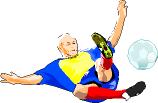
The big football countries
USA: 17 892 000 licensees (46% female), 1 690 clubs - Brazil: 7 077 000 licensees, 12 987 clubs - Germany: 6 217 083 licensees, 26 827 clubs - England 2 289 500 fired 42 000 clubs - France: 2,066,339 dismissed 19 731 clubs - Netherlands: 1 010 850 licensees, clubs 5 634 - Italy: 945 371 licensees, 11 630 clubs - Argentina: 530 000 dismissed, 3 035 clubs - Spain: 485 116 licensed , 15 782 clubs - Portugal: 96 080 redundant, 3 752 clubs - China: 75 000 redundant
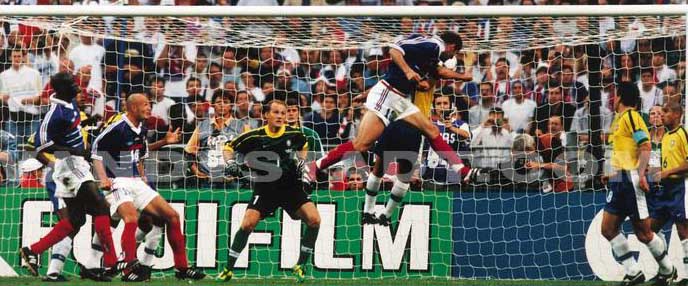
UEFA created in 1955 and 52 affiliated federations
The Presidents of UEFA
- 1954-1962: Ebbe Schwartz DEN. He is the creation of the European Cup of Clubs Champions in 1955 and European Cup of Nations.
- 1962-1972: Gustav Wiederkehr SUI. He transformed Cup Inter-Cities Fairs Cup UEFA in 1971. The European Cup of Nations in 1972 became the European Championship of Nations.
- 1973-1983: Artemio Franchi ITA. He created the European Supercup in 1973 and the final 8 teams in the European Championship of Nations in 1980.
- 1983-1990: Jacques Georges FRA. He excluded the English clubs of European Cups in 1985 after the tragedy of Heysel Stadium in Brussels, killing 39 people in the C1 final between Juventus and Liverpool.
- 1990-2006: Lennart Johansson SWE. He transformed the European Cup of Clubs Champions League Champions in 1992.
Some highlights :
Number of players in the world: 26 million in China, 24 million in the United States, 21 million in India.
More professionals: 16200 professional players in Brazil
Germany is the European nation where there are more players and active players: 14 438 313 players and 1 870 633 players for a total of 16 308 946 players (population: 82 422 299 people.
There are more clubs in England: 40 000 (119 000 teams)
In Japan, there are the more arbitrators: 189 603.
Nigeria is the country where you play the more soccer: 6 653 710 (population: 131 859 731
In South Africa, there's more young (under 18) playing football: 1 300 400.
It has the most players in the United States: 7 055 919 (17 416 859 players)
More than a quarter of the population of Costa Rica plays football: 1 084 588 (population: 4 075 261)
Bangladesh is the largest association without professional players: 6 280 300 professional players and zero.
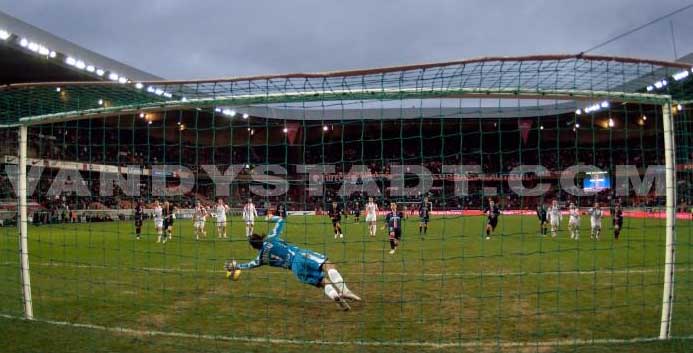
Competition
Two teams of eleven players including one goalie play against each other with a spherical ball. Players can not touch the ball with hands or arms.
No match can not take place if either team has less than 7 players.
The winning team is one that has scored the most goal is to say, one that will put the ball as many times as possible in the goals of the opposing team.
Namely
A classic team consists of a goalkeeper (numbering jersey 1), two fullbacks (No. 2 and 3), a stopper in the middle of the defense (No. 4), a defender ( No. 5) is ready to resume the attack (or libero), 3 midfielders (No. 8 for the middle, 6 and 10 for running backs), the link between attack and defense ( they may be offensive or defensive), 3 attackers (No. 7 for right-winger, No. 9 center-forward and No. 11 for the left wing).
The seventeen Laws of the Game
Act 1 Playground
Act 2 Ball
Law 3 Number of players
Law 4 Players Equipment
Law 5 Referee
Law 6 The Assistant Referees
Law 7 Duration of Match
Law 8 The start and restart of play
Act 9 ball in play and out of the game's technical area
Law 10 Goal scored
Act 11 The offside
Law 12 Fouls and Misconduct
Act 13 kicks
Law 14 kick Repair (penalty)
Law 15 Throw
Law 16 kick goal
Law 17 kick corner (corner)
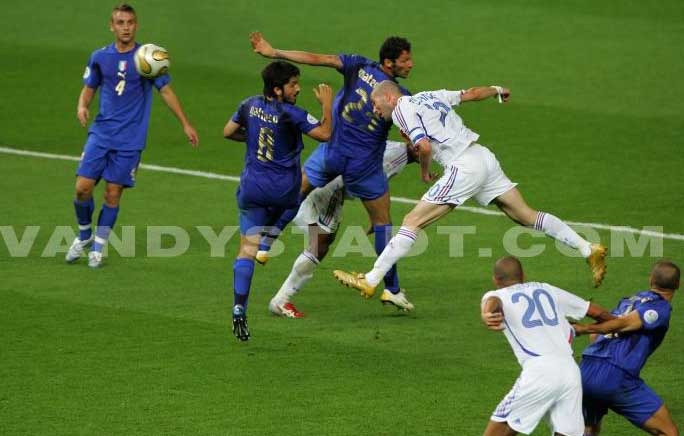
The code of honor includes ten golden rules:
- Always play to win,
- Playing in a spirit of fair play,
- Observe the Laws of the Game
- Respect your opponents, your teammates, referees, officials and spectators,
- Accept defeat with dignity
- Ensure the promotion of the interests of football
- Saying no to corruption, drugs, racism, violence and other threats to the football
- Helping others to resist the attempts of corruption,
- Denounce those who attempt to discredit the football
- Honoring those who defend the honor and interests of football.
Act 1. Playground
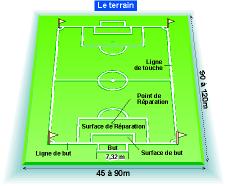
For international matches:
Length: minimum 100 m, 110m max. Width: minimum 64m, maximum 75 m.
All lines have a maximum width of 12 cm and are part of the land
The central point has a circle of 9.15 m radius.
Flags
At each corner of the land is planted a flag with a minimum height of 1.50 m. An arc of a circle of 1 m is drawn from one field
Goals
The distance between the two goalposts is 7.32 m and the lower edge of the crossbar is 2.44 m above the ground.
Both amounts must be white and have the same width and thickness of 12 cm maximum. The goal line has the same width as the uprights and the crossbar.
The biggest stadiums in the world
Rungado to Pyon-Gyang (North Korea) 150 000 seats.
Da Luz in Lisbon (Portugal) 120 000 seats.
Senayan in Jakarta (Indonesia) 120 000 seats.
Castelao in Fortaleza (Brazil) 119 000 seats.
Arruado in Recife (Brazil) 115 000 seats.
Maracaña Sao Paulo (Brazil) 135 000 seats.
Magalhaes Pinto, Belo Horizonte (Brazil) 125 000 seats.
Maracaña Rio de Janeiro (Brazil) 165 000 seats.
Morumbi in Sao Paulo (Brazil) 120 000 seats.
Azteca in Mexico City (Mexico) 115 000 seats.
Nou Camp in Barcelona (Spain) 115 000 seats.
Nasser in Cairo (Egypt) 100 000 seats.
Eden Garden in Calcutta (India) 100 000 seats.
Calicur Corporation (India) 100 000 seats.
Tehran Azadi (Iran) 100 000 seats.
Red Star Belgrade (Yugoslavia) 100 000 seats.
Central Kiev (RUS) 100 000 seats.
Luzhniki, Moscow (RUS) 100 000 seats.
Rose Bowl in Pasadena (CA, USA) 102 000 seats.
Olympic Stadium in Sydney (AUS) 120 000 seats.
Law 2 The Ball
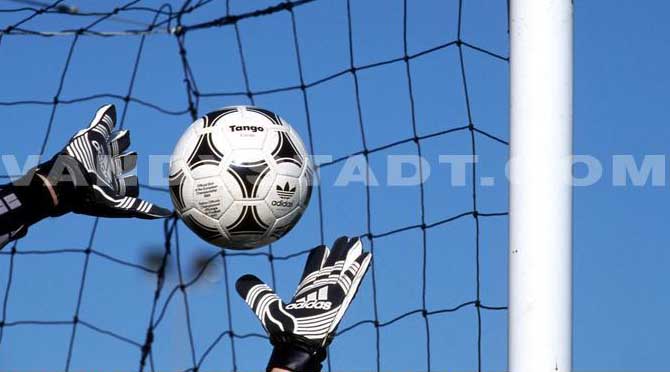
Its circumference is 70 cm longer and 68 cm at least. His weight is 450 g and more than 410 g less in the game
Balls of the World Cup
- Germany 1974: leather ball while White: "Telstar Chile.
- Argentina 1978: leather ball composed of 32 elements without beginning or end (no stitches): the "Tango" for use after the Olympics and European Cups.
- 1982 in Spain, leather ball in white, orange and yellow with waterproofed seams to improved aerodynamics wind tunnel: the "Tango Spain" developed by the Tango family. There was the "Tango Alicante to play in the spotlight, the" Tango Malaga for hardpack, the "Tango indoor.
- Mexico 1986: first fully synthetic ball hand sewn, the "Azteca".
- Italy 1990: synthetic ball 'high tech' consists of 32 elements, "the Etrusco.
- 1994 USA: High-tech ball with a polyurethane foam consists of 5 different materials, the "Questra.
- 1998 in France: the 'Habs' first ball color (blue, white, red).
- 2002 in South Korea and Japan: the 9th ball offered by Adidas World Cup bears the name 'Fevernova' recalling the fever generated for each WorldCup.
Herbert Chapman ANG (1879-1934) A big name in football. At the head of Arsenal, he invented the numbered jerseys, the spikes, use clock timers, dual arbitration, the white ball for night play, youth training, physical preparation of his players. So Arsenal won the Cup in 1930 and became national champion in 1931 and 1933.
Law 3 Number of players
Every match is played by two teams of 11 players maximum and minimum of 7 players, including goalkeeper .. Sixteen players may be on a game sheet.
Three substitutes are allowed in official competition, six players during the international friendly matches.
Law 4 Players Equipment
A player is: a jersey or shirt, pants and if the player wears shorts, they must be the same color as the dominant color of the pants; stockings, shoes, shin guards, which must be completely covered by low.
The goalkeeper must wear an outfit with color different from his teammates, the referee and assistant referees.
Law 5 Referee
The referee enforces the Laws of the Game Its decisions are final, it runs the game and take the decisions it deems consistent with the regulation and control the game with the assistant referees and, where appropriate, with the fourth Official.
It is the only one who can stop temporarily or permanently a game. He also decides that the end of a match.
An international referee must have a perfect physical condition. For this he underwent regular medical examinations. It must also pass fitness tests. It must be able to:
- Make a sprint 2 x 50 m in a time max. 7.5 seconds each (average of 6.95 to 7.11 seconds).
- Make a sprint 2 x 200 m in a maximum time of 32 seconds each (average of 29.06 to 29.15 seconds).
- To go in 12 minutes at least 2 700 m (average 3 049 meters).
- Running about 13.3 kilometers (8 miles) cons 6.650 kilometers for a linesman.
* 45 years ... is the retirement age for an international referee!
To improve communication between referees at major meetings, a "beep" is set in the flags of the two assessors. The beep was tested at the Atlanta Olympics in 1996 and used during the last WorldCup.
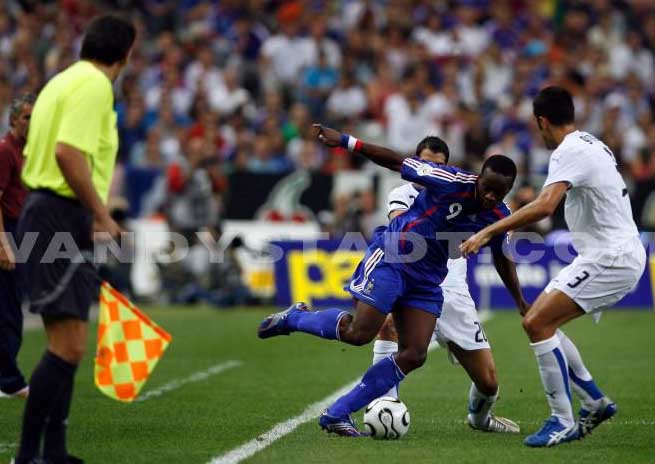
Law 6 The Assistant Referees
They are both. They report:
- When the ball is completely out of the playground
- How the team comes back key, or if kick or corner kick goal
- When a player should be penalized because he is in position offside
- When a replacement is sought
- When misconduct or any other incident occurred outside the field of vision of the referee
- When mistakes are made when the assistant referees are closer to the referee of the action (including, unusually, any misconduct in the penalty area)
- When, during penalty, the goalkeeper had moved before the ball has been kicked and if the ball has crossed the line.
Since July 2000, the assistant judges may decide to provide a penalty or expulsion (action or lack of language).
The Fourth Official
The fourth official is there in case one of the three match officials is unable to perform its task.
He is also responsible for assisting the referee in the replacement procedures during the match.
He is charged with monitoring equipment replacements before they enter the playground
Law 7 Duration of Match
Two half-time of 45 minutes each. Players are entitled to a break between two periods of 15 minutes. Maximum
Recovery of stoppage time: Each half can be extended by the referee based on the time for replacements, injuries ...
Kick repair: If a kick repairs must be carried out or begun at the end of half time it must be extended to allow execution.
The competition regulations may provide for two extensions of play 15 minutes each.
Law 8 The start and restart of play
Kickoff
Kickoff is a procedure to start the game or resume play:
- At the beginning of the match.
- After a goal was scored.
- Early in the second half of the match.
- At the beginning of each period of extra time, if any.
Before the kickoff all players are in their own half:
- Players of the team failing to kickoff to be held at least a distance of 9.15 m from the ball until it is in.
- The ball is put ashore on the central point.
- The referee gives the signal for the kick.
The ball is considered in play once it has been kicked forward. The running of the kick can not play the ball a second time before it has been touched by a teammate. It is possible to score a goal directly from the kickoff. The ball is considered in play when it is struck
Dropped ball
After a temporary interruption of the match caused by a reason not stipulated in the Laws of the Game, the game must
be taken over by a dropped ball.
Act 9 ball in play and out of play
Ball out of play
The ball is out of the game when he has completely crossed the goal line or touchline, whether on land or air.
Ball in play
The ball is in play in all other situations, including when he bounced into the ground after hitting an amount of order, crossbar or corner flag and it bounced into the ground after hitting the 'referee or assistant referee when they are on the playground
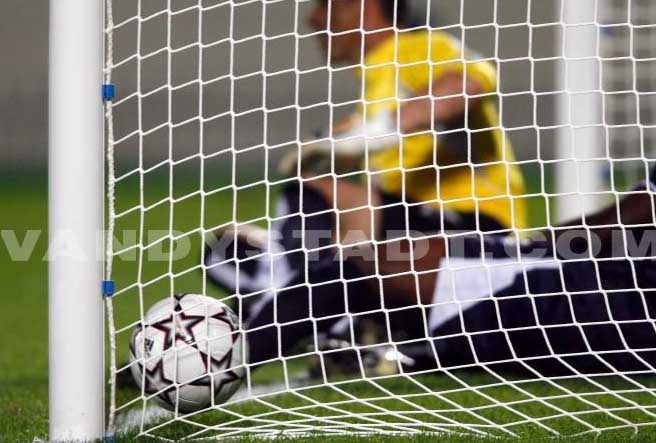
Law 10 Goal scored
A goal is scored when the ball has completely crossed the goal line, between the goalposts and under the crossbar.
If tied after 90 minutes of play, there will be an extension of two fifteen-minute change of camp at halftime. The winner of a match is determined by a golden goal or silver goal.
Law 11 Offside
A player is in position offside when a player is in the opponent behind the last defender (he is closest to the opponent's goal line) and if it takes an active part in the game There not offside when a player receives the ball directly: On a kick or a goal on a throw or a corner.
Law 12 Fouls and Misconduct
- Direct free kick
A direct free kick is awarded in the following cases:
- Give or try to give a kick to the opponent.
- Or to try and tripped to the opponent.
- Jumping on an opponent.
- Charge an opponent.
- Hit or try to strike an opponent.
- Shoving an opponent.
- Hard tackling an opponent to grab the ball by touching the opponent before playing the ball
- Keep an opponent.
- Spitting on an opponent.
- Deliberately touching the ball with hands
- Kick Repair (penalty)
A penalty kick is awarded when one of these mistakes committed by a player in his own penalty area
- Indirect free kick
An indirect free kick is awarded in the following cases, the guardian:
- Keep the ball in his possession for more than six seconds before letting go of hands.
- Touching once again hand the ball after letting go, without having been touched by another player.
- Touching the ball with his hands on a back pass deliberately kicked by a teammate.
- Touching the ball with his hands directly on a throw made by a teammate.
- Waste of time.
And when a player:
- Is so dangerous.
- Impedes the progress of an opponent.
- Prevents the goalkeeper from releasing the ball from his hands.
- Commits other errors not mentioned previously in Law 12, for which the game is stopped to caution or expel a player.
Yellow and Red Card
Since the 1999 season, the yellow card will be imposed for attempted cheating on the field (fool the referee by simulating faults). After 2 yellow cards, the player is excluded but the referee may, for misconduct , leaving his red card, which immediately excludes the player.
There may be yellow card when a player:
1. is guilty of unsporting behavior.
2. expresses its disapproval in words or actions.
3. persistently infringes the Laws of the Game
4. delaying the resumption of play
5. does not respect the required distance when executing a kick or a corner kick.
6. enters or returns to the playground without permission from the referee.
7. deliberately leaves the field of play without prior permission of the referee.
A player is sent off game (red card) if:
1. he is guilty of serious foul (tackle from behind).
2. he is guilty of an act of brutality.
3. he spits at an opponent or any other person.
4. it prevents an opponent to score a goal, or destroys a clear chance on goal by deliberately handling the ball in hand
5. it prevents a clear goalscoring opportunity to an opponent moving towards its goal by committing a foul punishable by a free kick or a kick of repair.
6. it holds about or made offensive gestures, offensive and / or coarse.
7. he receives a second caution during the same match.
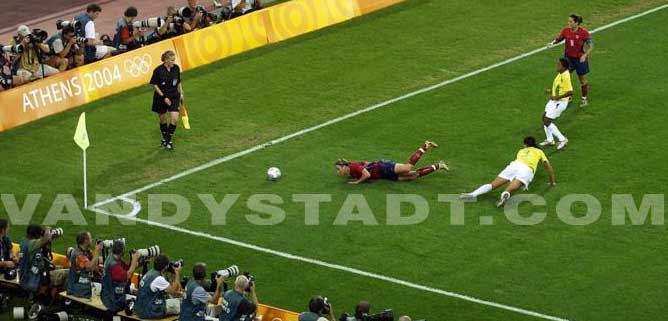
Act 13 kicks
The kicks can be either direct or indirect.
- The direct free kick
All players of the opposing team must be at least 9.15 m from the ball. If the ball goes directly into the goal from the opposing team, the goal is awarded
- The indirect free kick
The referee signals the indirect free kick by raising his arm above his head. The goal can be scored if the ball enters the goal after hitting another player. All players of the opposing team must be at least 9.15 m of the ball
Law 14 kick Repair (penalty)
The goalkeeper of the team is on its own line and can move on his goal line during a penalty kick. All players other than the one who pulls must be: outside the penalty area - behind the penalty spot - at least 9.15 m from the point of repair.
Law 15 Throw
A goal can be scored directly from a throw-in. At a throw-in, the goalkeeper can take it with her hands.
Law 16 kick goal
A goal may be scored directly from kick goal
A kick is awarded a goal when the ball last touched by a player of the attacking team has completely crossed the goal line, whether on land or air, without a goal has been marked in accordance with the Act 10.
Law 17 kick corner (corner)
A goal may be scored directly from kick corner
Good to know:
- The goalkeeper did not keep the ball in his hands more than 5 / 6 seconds.
- The guards could move into the surface to unlimited, but not with a time limit of 6 seconds.
Transfer
Since 1996, each team can field eleven players foreigners provided they belong to the European Union. The stop is named after Jean-Marc Bosman, a Belgian. The transfer rule 3 +2 (three foreigners plus two assimilated into a team; Bosman) no longer exists since February 1996.
Joker
The transfer of a player is still allowed until December 15 at midnight (the famous "Joker"), and for each of the two
ISIONS provided that this mutation is in compliance with the regulations. Throughout the season, a club is also authorized to recruit an extra player in all these cases: the death of a player holder, serious injury to a player holds in his club at a team selection in France, resulting in failure less than three months.
Women's Soccer
The matches are played in two periods of 40 minutes.
- Women's football in France ... .. 42 000 is dismissed, 1000 teams divided into 3
ISIONS.
- Women's football in the world ... .... is 22 000 000 players in the world: 7 240 000 licensed in the United States, 772 377 in Germany, 600 000 in China, India 200 000, 65 000 in Denmark, 31 756 in France, 15 000 in Russia , 13 621 in Belgium and 8 759 in Spain.
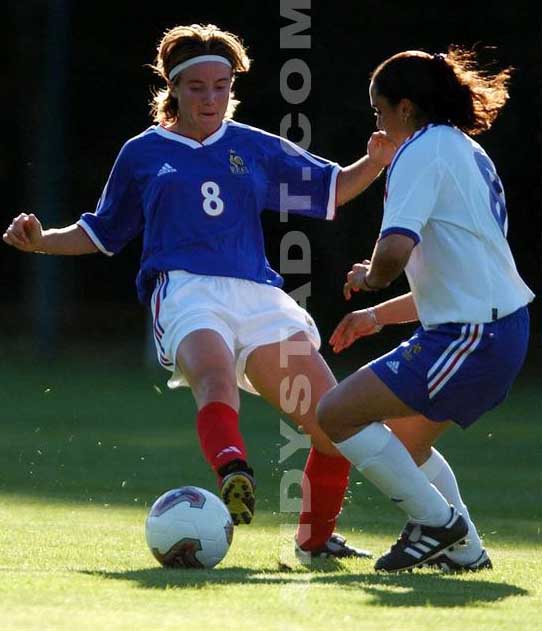
The three big stars of women's football
Anne Michelle Akers (1-2-66) USA. Elected best player of the century by FIFA in 2000. World Champion in 1991 (top scorer) and 1999 (3rd in 1995). Olympic champion in 1996. 153 selections (105 goals).
Mariel Magret "Mia" Hamm (17-3-72) USA. The greatest of all. World champion in 1991 and 1999 (3rd in 1995 and 2003) and Olympic champion in 1996 and 2004 (2nd in 2000). Named Best Female Athlete of the Year in the USA in 1997 and Most Valuable Player of the Year FIFA in 2001 and 2002. 275 selections (159 goals, world record).
Birgit Prinz (25-10-77) ALL. World Champion in 2003 (2nd in 1995) and Europe in 1995, 1997, 2001 and 2005. 3rd of the Olympics in 2000 and 2004. Winner of the European Cup in 2002 with Frankfurt. Elected player of the year by FIFA in 2003, 2004 and 2005. Best player of the World Cup in 2003 (top scorer). 144 selections (90 goals) as a hitter.
Other games
- The Futsal
This is indoor football, more technical and faster with more goals scored. It is played between two teams of five players with one ball bouncing very low.
The rules: the prohibition of the tackle, a temporary exclusion of two minutes allowed, the replacements are unlimited.
The France 1 280 clubs account for some 12 000 followers.
Throw
When the ball has fully passed the touchline, whether on land or by air, it will be rejected at stake in any direction from where he has crossed the line by a player from the opposing team that which is the player who touched the ball last. The player throwing the ball shall, at the start, face the field and have any part of each foot on the touchline or outside the line. It will use both hands and throw the ball from behind and above the head. The ball is in play immediately after entering the field of play, but it may however be replayed with the player having made a return after having been touched or played by another player. A goal can be scored directly from a throw.
Kick or corner Corner
When the ball after being hit in last place by a player of the defending team will have completely passed the goal line, whether on land or by air, outside the part of the line between the amounts goal, a kick to the corner will be given by a player of the attacking team: the ball must be placed entirely within the quadrant of the corner flag nearest to the exit flag can be moved, and it is here that the ball is kicked.
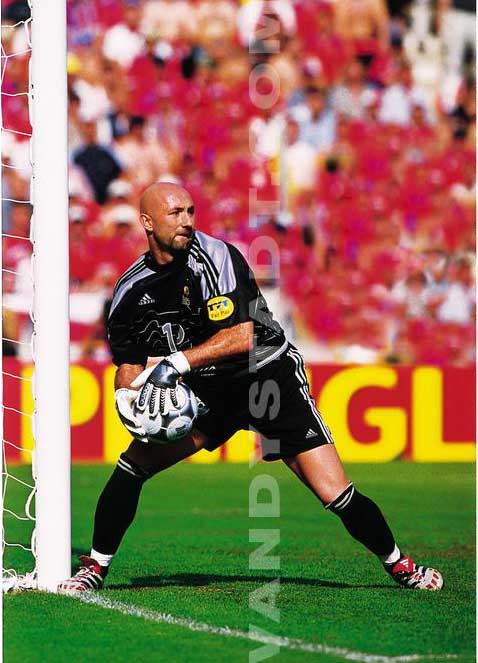
- Australian Football
The Aussie was introduced by Irish miners in the second half of the nineteenth century in the Victoria area. The rules were established by TW Wills and HC Harrison, cricketers in 1863. The field is oval from 110 to 155 m wide and 135 to 185 m in length. On either side of the oval at the end are ready 4 posts two major exchanges. The game consists of passing the ball between 2 large poles (6 pts) between the two small posts (1 point) by kicking or passing the fist. Each team comprises 20 players including 2 alternates. Four periods of 25 minutes interspersed with 3 minutes, 15 minutes and 5 minutes up the game.
The big football star Gary Ablett Australian (1-10-61), the No. 5 team "Geelong Cats" who scored 1030 goals in career!
Copyright Sportquick/Promedi








